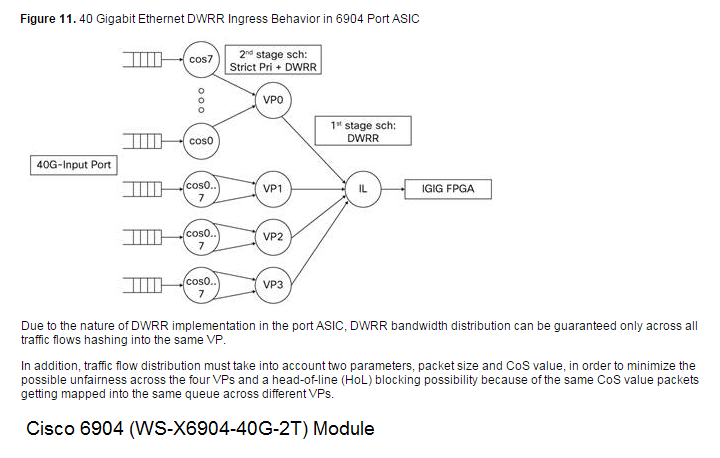6904 buffers
A lot of detailed information here. 4 x 40G oversubscribes the switch fabric bandwidth by 2X. The line card can run in performance mode where two of the interfaces are shut matching the port and fabric bandwidths. Or it can run in oversubsribed mode where all four ports are active. Cisco has a nice white paper on this line card:
Each 40G slot has four virtual ports (VP) which are each allocated their own 21 MB slice of the output buffer pie. Since all the packets in any single flow will hash to a single VP, the max buffer available to a single flow is 21 MB. Each 40G CFP can run in 4 x 10G mode in which case the output buffer per 10G port is [still] 21 MB. The input buffer is similarly divided into four virtual chunks. Snippet from the white paper:

| From WS-X6904-40G-2T data sheet | |
| Port buffers |
|